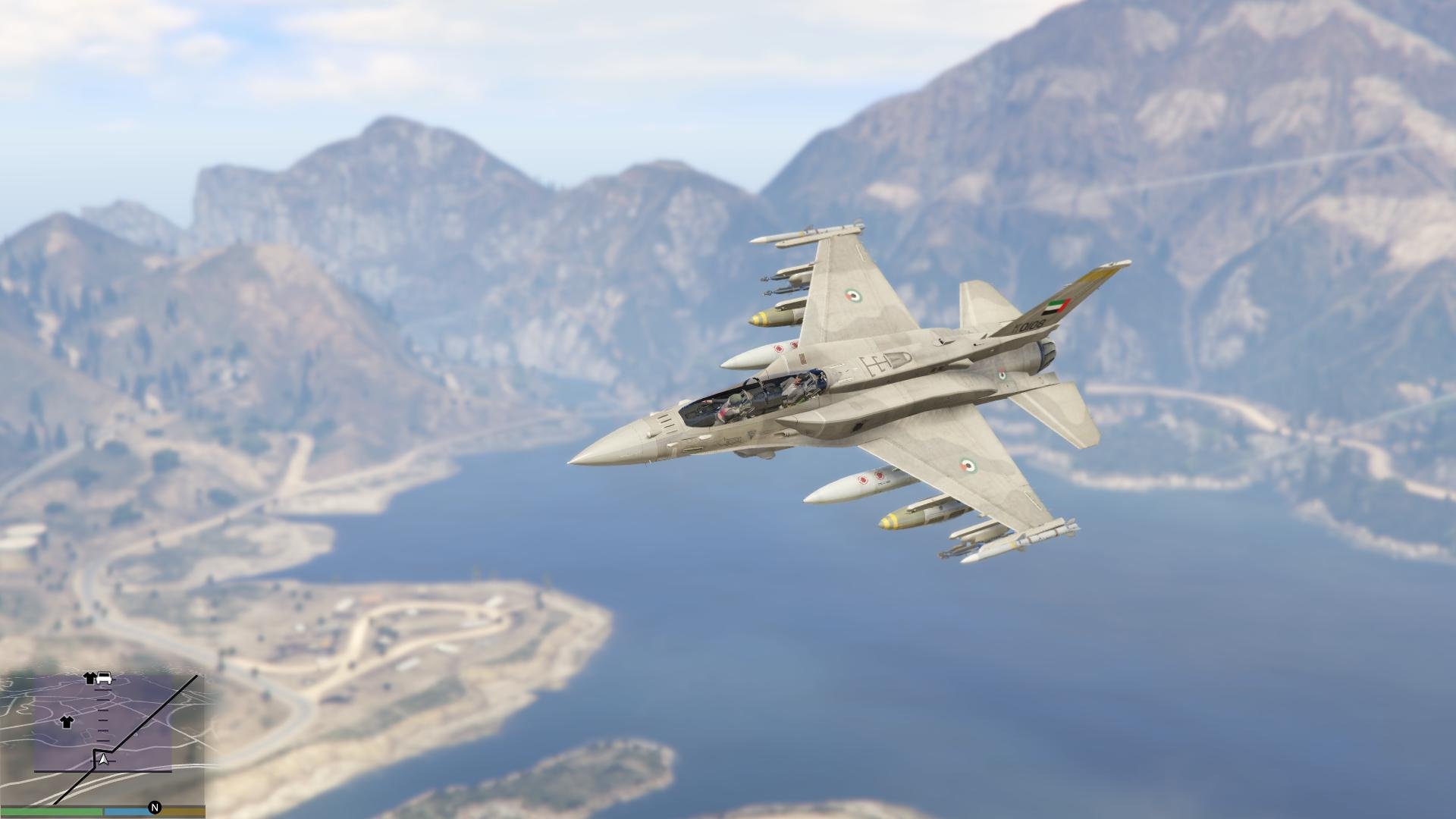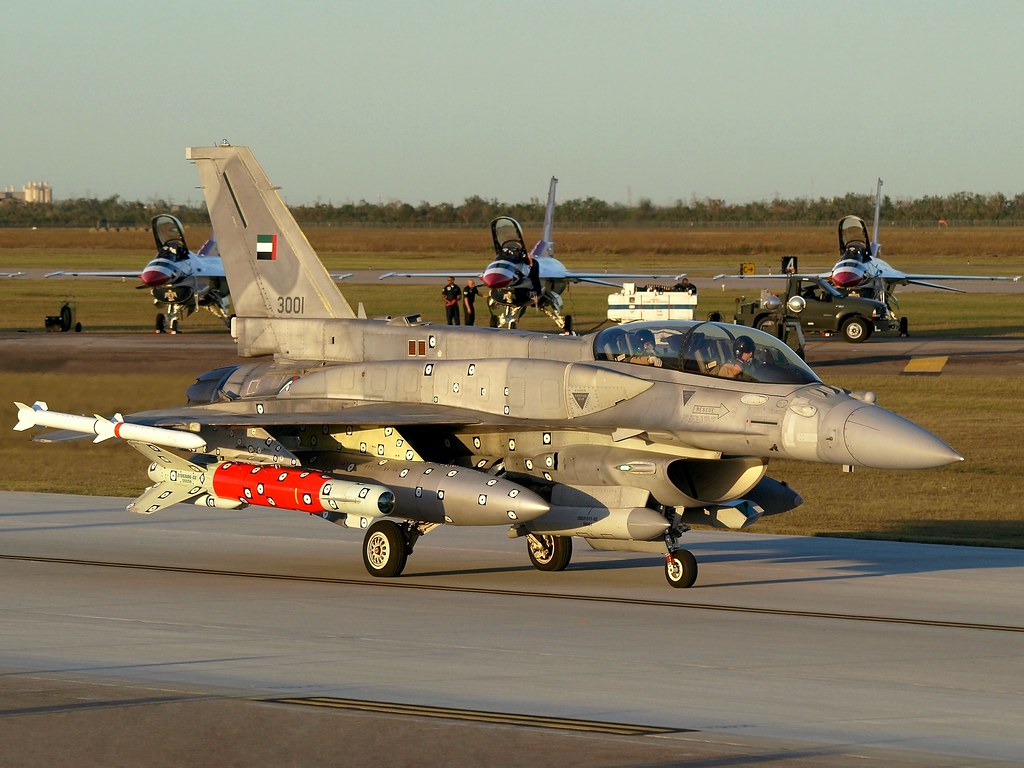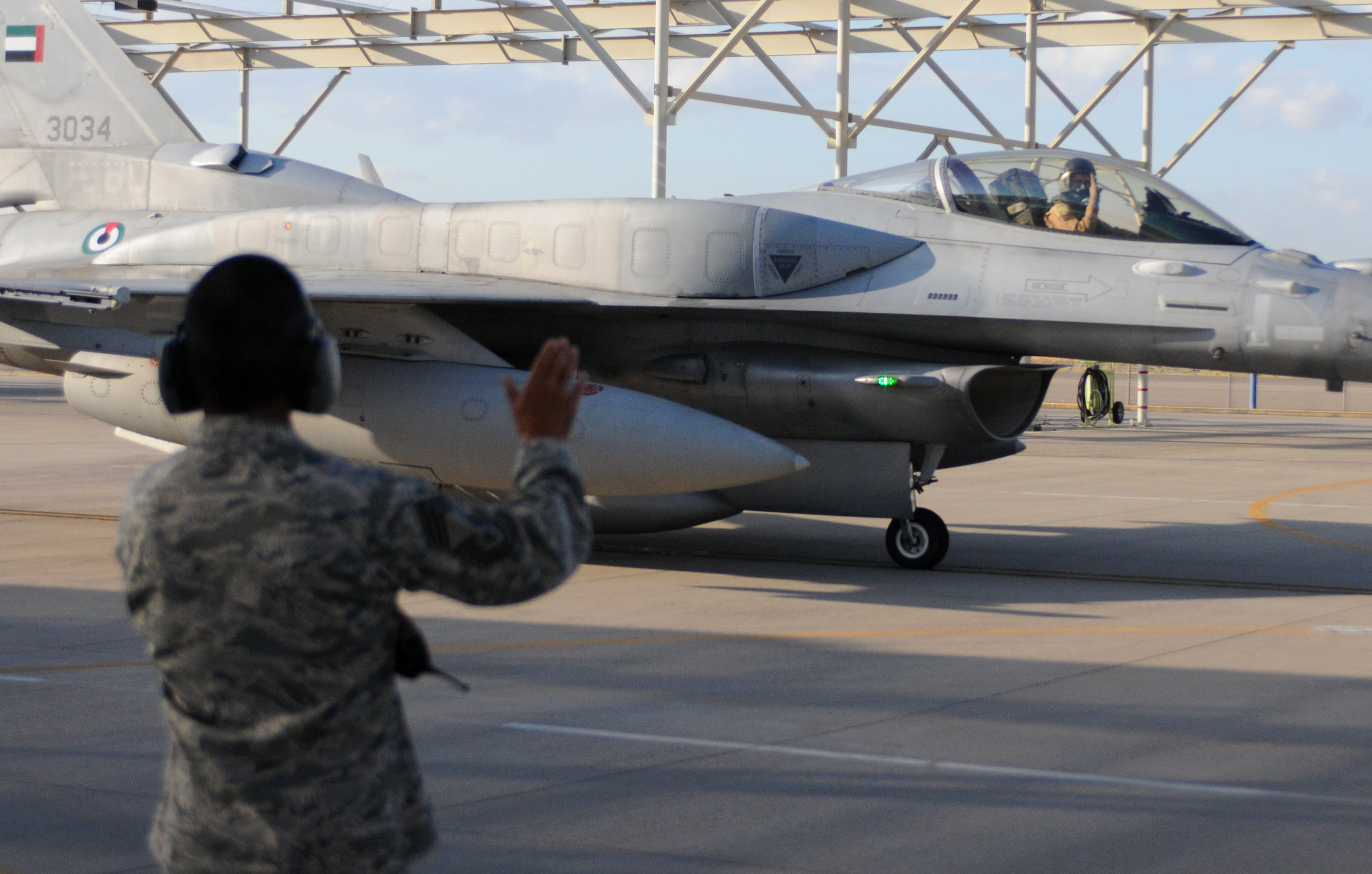F16 Block 60 - In 1993, Lockheed acquired the Fort Worth division of General Dynamics, a move that was part of a series of corporate takeovers that led to the merger of Lockheed and Martin Marietta in 1995 to form Lockheed Martin. As a result, the General Dynamics F-16 is now the Lockheed Martin F-16. Lockheed Martin acquired valuable assets with the F-16 and continued to improve the type. A characteristic of good fighter jets is their adaptability for improvement, and the F-16 amply demonstrated this virtue. It is still being refined in the 21st century, with improvements incorporated into the latest version, the F-16E/F "Block 60".
At least part of the Block 60F-16's roots lie in the mid-1990s in Lockheed Martin's investigation of Israel's "F-16ES (Extended Strategic)" variant. The F-16C that was used as a GE F110 demonstrator was further modified as an F-16ES demonstrator, making its first flight in November 1994 and conducting a series of test flights in early 1995.
F16 Block 60

The F-16ES demonstration was equipped with dummy "fuel tanks (CFTs)" that were mounted at the wing roots up to the tail, as well as FLIR camera blisters above and below the nose. Fuel tanks identical to production should give the F-16ES a combat radius without fuel with a war load of 1,600 km (1,000 mi). Test flights showed that the tanks did not have a significant effect on the handling of the aircraft.
United Arab Emirates F 16 Falcon Block 60 Fighter
* The Israelis opted for the F-15I Eagle instead, and the F-16ES demonstrator was retrofitted to more or less normal F-16 specifications. However, the terrorist financing scheme was validated, and Lockheed Martin had it in mind. Source: airvectors.net
For a long time, it was uncertain whether there would be a Block 60/62 version of the F-16C / D. However, in 1994, the UAE indicated that it needed 80 long-range fighters. The UAE wanted to incorporate the latest technology available in these aircraft, and indicated that if the United States was not willing to launch such technology, they could consider competitors such as the Eurofighter and Dassault Rafale.
In pursuit of the Emirates contract, Lockheed Martin created a delta wing design largely based on the F-16XL. Wingroot docks can hold four AIM-120 AMRAAM missiles, and a General Electric F110 engine has been proposed. The delta-winged F-16 was to carry an improved radar, an internal FLIR localizer and laser system, and an improved cockpit with a more advanced suite of multifunction displays and liquid crystal displays.
However, very soon Lockheed Martin began to develop second thoughts about such an advanced aircraft, and began to consider a more conventional design for the UAE. The UAE indicated that it was reluctant to commit to an untested aircraft, one that had no other customers and especially one that the US Air Force was not interested in. At this time, the Pentagon had indicated that they were interested in the Joint Advanced Strike Technology (JAST) project as a possible replacement for the F-16. Lockheed Martin was a competitor to the JAST project, and since the delta-winged F-16 could outperform the JAST in almost every aspect except stealth and for much less money, the company could end up competing against itself. The delta-winged F-16 project was quietly abandoned.
F 16e/f Block 60 Redux
Lockheed then proposed Block 60/62 F-16C/D for the UAE order. The Block 60/62 will be largely based on the earlier Block 50/52, but will have an internal targeting and navigation system similar to the LANTIRN system, but with only the sensor heads outside the aircraft. However, the Block 60/62 designation will not be applied until the aircraft enters production.
Again, two alternative engines will be offered. The Block 60 will be powered by a General Electric F110-GE-129EFE (Fighter Enhanced Engine), delivering 34,000 lbs with a potential boost of 36,000 lbs. The Block 62 will be powered by a Pratt & Whitney F100-PW-229A delivering 32,000 lbs. t, with the potential to grow to 35,900 lbs. Both engines are available with drivetrain.
The Block 60/62 will be equipped with a Northrop Grumman sensor array that will be based on the APG-68 (V) 5 radar. It is an integrated system that contains an on-board guidance system and a navigation system similar to LANTIRN but with only off. -plane sensor tests. Northrop Grumman AN/APG-80 Agile Beam Radar (ABR) will be provided which will have an active array with a large number of transmitter/receiver modules. This beam can be directed almost instantaneously, making it possible to interleave different radar patterns. For example, the radar can search for surface targets and perform terrain tracking while simultaneously searching for airborne threats.

Departing on the 35 liter gas station in the 111 RS for a long night of weapons load stability testing over the Gulf of Mexico using Lockheed's F-16 prior to delivery to the UAE. It also carried civil registration N161LM. Although 00-6056 may have begun assembly in 2000, it was not fully assembled until late 2003. Photo: MDLPhotoz @flickr
F 16e/f Desert Vipers Block 60 Kinetic 48136
An attempt will be made to use commercially available products such as PowerPC and Pentium processors, and an Ethernet database will be used.
After two years of negotiations (including arguments over whether to release computer software codes), the UAE signed contracts on March 5, 2000 for 55 Block 60 F-16 two-seaters and 25. These aircraft they will be known as the Desert Falcon. On March 14, it was announced that the engine will be the General Electric F110-GE-132, an upgraded version of the existing F-16 engine that can deliver 32,000 lb. ft.
Fueling the 111th for a long night of weapons load stability testing over the Gulf of Mexico with Lockheed's F-16 before delivery to the United Arab Emirates. It also carried civil registration N161LM. Although 00-6056 may have begun assembly in 2000, it was not fully assembled until late 2003. Photo: MDLPhotoz @flickr
The Block 60 also includes new compatible fuel tanks that greatly extend the range of the aircraft, with less drag from the lower tanks.
Wallpaper Ifts Pod;, United Arab Emirates Air Force, Desert Falcon, F 16e Block 60 Images For Desktop, Section авиация
In 2003, the Block 60 was redesigned from the F-16E/F, recognizing structural, avionics and propulsion advancements, making the Block 60 a virtually new version of the F-16. They are also known as "Desert Falcons", in tribute to their first customer.
The first of 80 Block 60F-16s for the UAE Air Force made its first flight in Fort Worth on December 6, 2003. It carried the Series 3001 and carried the civil registration of N161LM. Flight tests by Lockheed Martin began in early 2004. Source joebaugher.com
The most advanced F-16 in the world is not American. This distinction belongs to the United Arab Emirates, where the F-16 E/F Block 60 is half a generation ahead of the F-16 C/D Block 50/52+ that forms the backbone of the USAF, and many others. fleets in the world. The Block 60 has been promoted as a lower budget alternative to the F-35A Joint Strike Fighter, and there is a strong argument to be made that its performance numbers and wide range of sensors keep it ahead of the pending upgrades of F-16 in countries like. such as Taiwan, South Korea, and Singapore.
The UAE has invested in the development of the Desert Falcon, and the contract is said to include a royalty fee if other countries buy it. The investment does not end when the fighters are delivered. Funds are still needed for ongoing training, field presence and equipment needs – and the UAE has decided it still needs more aircraft. This DID article profiles the F-16 Block 60/61 aircraft, providing a window into the associated costs and its life cycle, including the acquisition of equipment intended for this fighter fleet.
F 16 Block 60 Uaef 3d Model
DUBAI (Reuters) - The UAE Defense Ministry announced a 6 billion dirham (1.24 billion pound) deal with Lockheed Martin Corp to upgrade F-16 fighter jets, a spokesman for the UAE Ministry of Defence.
Major General Abdullah Al-Sayed Al-Hashemi, head of the Military Committee and spokesman for the UAE Armed Forces, said at a press conference that the agreement provides for the modernization of 80 F-16 fighter jets. Source: reuters.com
The F-16 has now undergone 6 major mass changes since its inception in the late 1970s, with 4 generations of primary avionics, 5 engine versions split between 2 basic models (P&W F100 and GE F110) , 5 versions of radar and 5 of electronic warfare. wings, and two generations of most other subsystems. Moore's law also applies, albeit more slowly: the latest F-16 core computer cluster has more than 2,000 times the memory, and more than 260 times the original production F-16.
Each new iteration of the fighter costs money to develop, integrate and test. The UAE has invested nearly $3 billion in the research and development of the F-16 E/F Block 60 Desert Falcon. The first flight took place in December 2003, and Lockheed Martin began flight testing in early 2004. The training of Emirati pilots for the F-16E / F began at the Tucson National Guard Base, AZ in September 2004, and completed the first set of pilots his work. Training in April 2005. The first Desert Falcons arrived in the UAE in May 2005.
F 16 Fighting Falcon Multirole Fighter, United States Of America
All the first 60 aircraft have been delivered, and all training is now in the UAE. versions of it
$2000 stimulus update, 2000 dollar stimulus checks, $2000 stimulus, 2000 monthly stimulus, 2000 a month stimulus, $2000 stimulus check, stimulus check 2000, 2000 stimulus, $2000 4th stimulus check, 2000 fourth stimulus check, $2000 stimulus check update, 2000 dollar stimulus

0 Comments